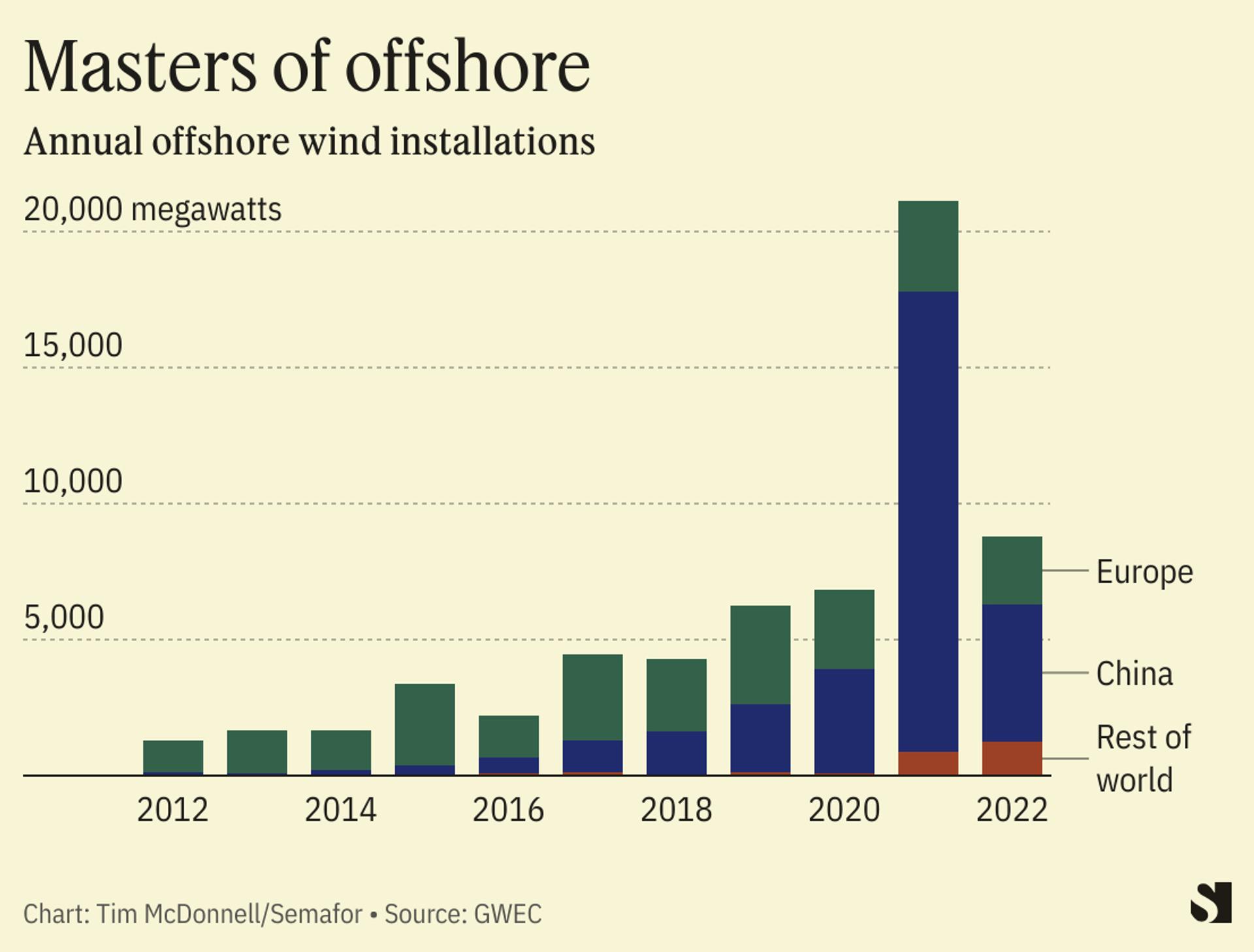The News
The U.S. held its first auction for leases to build offshore wind farms in the Gulf of Mexico, and all it heard was crickets.
The Interior Department pitched three new lease areas on Tuesday, two off the Texas coast and one off Louisiana, following a dozen increasingly competitive offshore wind auctions last year. Despite high hopes from clean energy advocates that the auction could herald a pivot for the heartland of the U.S. fossil fuel industry, in the end, there were zero bids for the Texas leases. Louisiana’s, meanwhile, went to a subsidiary of German energy company RWE for an underwhelming $13,500 per square kilometer: Leases sold last year in New York, North Carolina, and California went for an average of $1.4 million per square kilometer.
The result “is not wholly surprising,” said Samantha Woodworth, senior wind analyst at energy intelligence firm Wood Mackenzie. “Gulf offshore wind is just not very economic.”
Tim’s view
The lackluster auction turnout shows that the U.S. offshore wind industry still needs government support to scale up, and that the region’s oil and gas companies aren’t as ready to dive into clean energy as many had hoped.
There are a few problems with the Gulf as a venue for offshore wind. Wind speeds are normally low, requiring larger and more efficient turbines to produce a profitable volume of electricity. And occasionally, wind speeds are far too high: Hurricanes routinely disable the region’s offshore oil platforms. The region’s seafloor is also notoriously soft and silty, raising the cost of fixing turbines in place. As a result, a federal analysis projected that the price to produce power from offshore wind from the Gulf will be between $125-150 per megawatt-hour in most cases by 2027, double the national offshore wind average.
That’s especially a problem because Texas and Louisiana already have some of the country’s cheapest electricity, evaporating any potential competitive edge for offshore wind.
New York, Massachusetts, and other states with burgeoning offshore wind industries also have cost problems. But their offshore wind lease prices are much higher than the Gulf’s because most of those states have offshore wind purchasing mandates for their utilities, effectively guaranteeing the market. Louisiana has an offshore wind installation target — five gigawatts by 2035, which the area auctioned this week could cover about 20% of — but no purchasing mandate. Texas has neither (Republican lawmakers in the state have called offshore wind a “boondoggle”).
Since offshore wind isn’t competitive on Gulf-area electric grids, some industry advocates see the local oil and gas industry as an alternative customer. A recent report by the Business Network for Offshore Wind, a trade group, argues the Gulf “is perfectly positioned to be a hub for green hydrogen production.” The idea is that fossil fuel companies could be willing to pay top dollar for electrons from offshore wind that they can use to manufacture low-carbon hydrogen. That fuel can then be employed in their own local refineries and petrochemical factories and sold on to other industrial customers. Green hydrogen producers will also be able to reap one of the most lucrative tax credits in the Inflation Reduction Act.
TotalEnergies, Invenergy, and Avangrid, which had registered as possible bidders in the Gulf, all mentioned the allure of green hydrogen in pre-auction filings to the DOI. But the outcome of the auction shows that a tangible market for green hydrogen is still too far off for them to justify staking a claim, Woodworth said.
Know More
High costs and bureaucratic problems with grid interconnection are weighing down the global wind industry as a whole. A report last week from BloombergNEF found that while global private investment in renewable energy used to be equally balanced between wind and solar, since 2021 wind investment has stalled while solar has soared. Wind investment needs to triple from its current levels for it to grow on track for midcentury net zero targets, senior clean power analyst Meredith Annex said.
Room for Disagreement
It’s still too soon to write off the Gulf as an offshore wind venue completely. Despite its cost challenges, the region is also home to a strong contingent of experienced offshore energy workers and offshore infrastructure supply chains. A shipyard in Texas is building the nation’s first U.S.-flagged offshore wind installation vessel, and although this project too has been delayed by cost overruns, it signals that the Gulf could play an important role in supplying wind services and hardware to other regions. Meanwhile, Woodworth said, upcoming lease auctions in Oregon and Maine are likely to garner more voracious bidding.
The View From China

Europe, which was long the global epicenter for offshore wind, is now in second place to Asia after a remarkable surge in installations in China, according to a report this week from the Global Wind Energy Council. As more of the upstream supply chain for offshore wind hardware shifts to China, the report warned, “restrictive trade policies proposed by the EU and the U.S. are almost certain to create bottlenecks.”
Notable
- India is also stepping up its involvement in wind manufacturing. At a shareholder meeting this week, billionaire industrialist Mukesh Ambani said he plans to begin building low-cost turbine blades at a factory in Gujarat.
